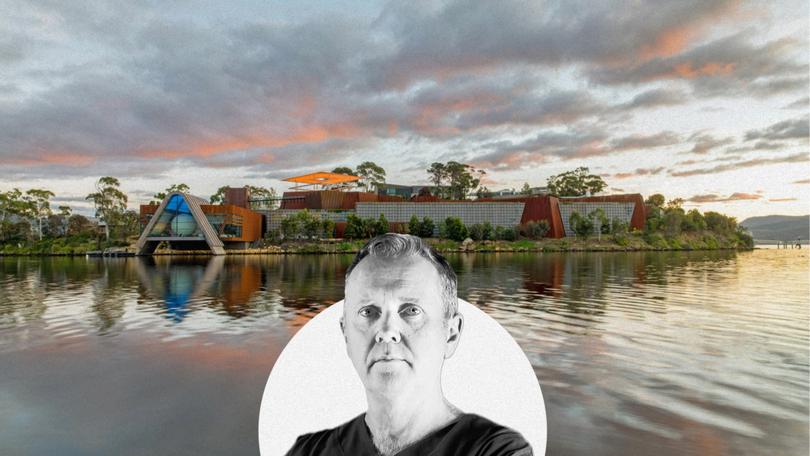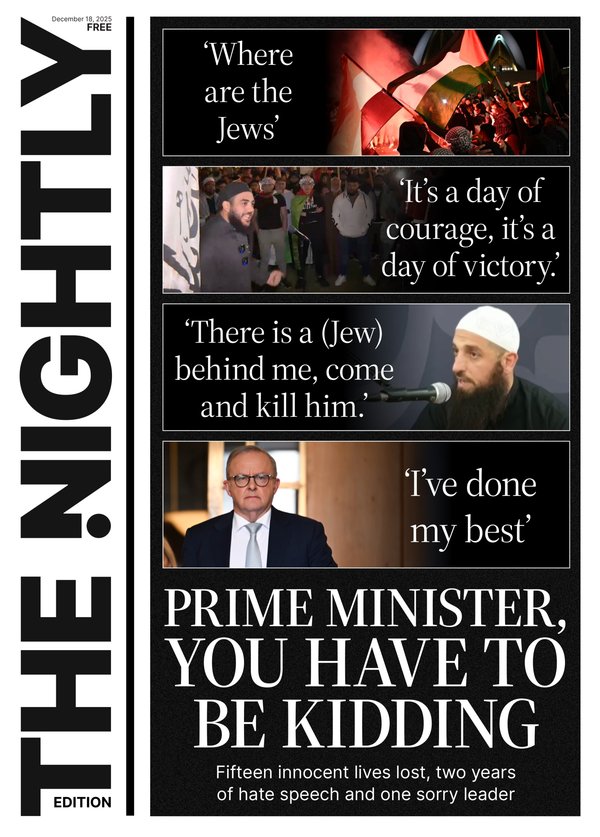ANDREW MILLER: What can we learn from Tasmania’s polarising Museum of Old and New Art

An art gallery review.
Tasmania got to me with their clever-crafted slogan — “Come down for air. Be inspired.”
Anaesthetists are vulnerable to any play on words related to inspiration, and we were looking to celebrate a milestone birthday, with fine vintage friends.
Sign up to The Nightly's newsletters.
Get the first look at the digital newspaper, curated daily stories and breaking headlines delivered to your inbox.
By continuing you agree to our Terms and Privacy Policy.The only fair thing about life is that if it goes well, we all get older at technically the same rate. Me and Brad Pitt — some minor genetic differences perhaps, but always the same age.
There were a couple of barriers to our weekend in Hobart.
Finding someone to look after the clamorous five-year-old, the staggeringly incontinent dog, the insouciant cats, two white rats — don’t ask — and the one surviving fish.
Presumably, that fish ate all the others.
The price of success, all too often, is loneliness.
Tasmania is not easy to get to, but I was able to snag no-frills direct flights at a sociable hour.
Like all dads, I would have been a great travel agent. “Mask up, and carry-on bags only!” I cried.
Of course, I bought too many presents for the kid, so I had to buy a checked bag for the way home.
My wife remained, patient.
Deep in the half-lit bowels of Hobart’s Museum of Old and New Art — MONA — there is a small tower of empty plastic flasks, representing a building atop a pedestrian thoroughfare.
Projected from behind are the moving silhouettes of hundreds of tiny people.
At the street level, they are rushing to and fro, while all the upper windows imply couples — ahem — enjoying one another’s company.
A metaphor for the ordinary, repetitive human experience perhaps.
Work, love, repeat. Occasionally though, an extra character appeared, an outlier — the artist, or us? — climbing from level to level — lost, or a voyeur? — until finally ejected, only to sneak back in.
We all battle to maintain perspective, amidst whatever daily routine we adopt. Art and travel can bump us out of the ruts that prescribe our habits.
Nobel Laureate Edward de Bono said, “everyone has the right to doubt everything as often as they please and the duty to do it at least once.”
The duty.
I mentioned my excellent flight bookings only once during each meal in the beanie-mandating cold of the southern tip of Australia.
MONA is the opposite of what a committee would do, which is my highest compliment.
It belongs to David Walsh, who admits his world-class art collection — in its disorienting, shadowy Bat-cave — is peacockery.
His self-effacing vision resonates as deeply Australian — an encouraging reason that US-style politics will not spread here.
We do not take anything seriously enough to tap into the worst of cultist dogmas. Australian politicians will never inspire large personal followings.
Walsh once made the point that every achievement is undermined by its opportunity cost. We must ask — “Yeah, but what else could have been?”
My cherished direct flight home was pre-boarding when, right out of the Virgin blue, it was cancelled without explanation.
This necessitated some calls to secure the ongoing care of our abandoned child.
I picked up subtle signals that my status as supreme travel organiser was in doubt.
We got my unnecessary bag back from a reluctant conveyor belt, only to check it in again. Then we flew to another city and waited for my bag again — long enough that we had to literally run for the last shuttle bus.
The motto of our airport hotel from hell, wedged between runway four and Meth Street, was “Play On.”
There was a basin conveniently located by the bed.
Before sunrise we took another shuttle, to shuffle in the mother-figure of all dehumanising queues for the third bag drop. We were silhouettes.
Travel and art, at their best, are humbling — even at Brad Pitt’s age.
MONA — maybe something else would’ve been better, Mr Walsh, but I don’t know what — 9/10.
